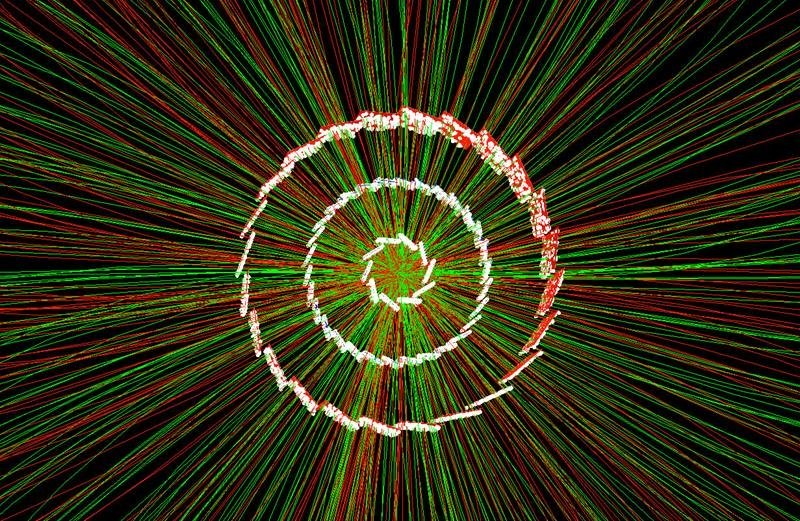The Science
The process called hadronization occurs when particles called quarks and gluons combine to form hadrons. Hadrons are composite subatomic particles made of two or three quarks. Once combined, quarks and gluons are “confined,” or trapped, in hadrons. To understand hadronization, nuclear physicists at the Relativistic Heavy Ion Collider (RHIC) measure the relative abundance of certain two- and three-quark hadrons created in collisions of gold ions. In particular, they study particles containing heavy “charm” quarks, which are easier to track than lighter particles. The measurements reveal that there are many more three-quark hadrons than expected under a widely accepted explanation of how hadrons can form. The results suggest that quarks in the dense particle soup created at RHIC coalesce to pair or triple up.
The Impact
Hadrons made of two or three quarks are the building blocks of visible matter in our world. That includes the protons and neutrons that make up the nuclei of atoms as scientists describe in the Standard Model of Particle Physics. But scientists never see theinner building blocks—the quarks and gluons—as free objects because quarks are always “confined” within composite particles. Colliding energetic beams of gold nuclei at RHIC melts the boundaries between individual protons and neutrons, momentarily setting the quarks “free.” Tracking the particles that stream out of RHIC’s collisions can help nuclear physicists understand hadronization and how the strong nuclear force keeps quarks confined to build up the structure of everything visible in our world.
Summary
Heavy ion collisions at RHIC, a DOE Office of Science user facility, create a quark-gluon plasma (QGP) in which quarks are momentarily set free from their ordinary bounds within hadrons. Tracking the relative abundance of hadrons made of two and three quarks emerging from RHIC’s QGP can help scientists sort out theoretical explanations for hadronization.
Nuclear physicists measured hadrons containing quarks with “charm” flavor, which are heavier and easier to track than the “up” and “down” quarks in ordinary matter. Researchers “zoomed in” on three-quark charmed “lambda” particles, which decay less than 0.1 millimeter from the center of the collision. STAR also counted two-quark particles called D mesons and found them in nearly equal numbers. That was far more charmed lambdas than had been predicted by an explanation for hadronization called “fragmentation,” in which energetic quarks or gluons “excite” the vacuum and “split” to form quark-antiquark pairs that later recombine. The findings support an alternate mechanism, known as coalescence, in which the dense QGP brings quarks close enough to recombine into composite particles directly.
Funding
This work was supported in part by the Department of Energy Office of Science, Office of Nuclear Physics program, and by the National Science Foundation, the Ministry of Education and Science of the Russian Federation, National Natural Science Foundation of China, Chinese Academy of Science, the Ministry of Science and Technology of China and the Chinese Ministry of Education, the National Research Foundation of Korea, Czech Science Foundation and Ministry of Education, Youth and Sports of the Czech Republic, Hungarian National Research, Development and Innovation Office, New National Excellency Programme of the Hungarian Ministry of Human Capacities, Department of Atomic Energy and Department of Science and Technology of the Government of India, the National Science Centre of Poland, the Ministry of Science, Education and Sports of the Republic of Croatia, RosAtom of Russia and German Bundesministerium fur Bildung, Wissenschaft, Forschung and Technologie (BMBF) and the Helmholtz Association.



